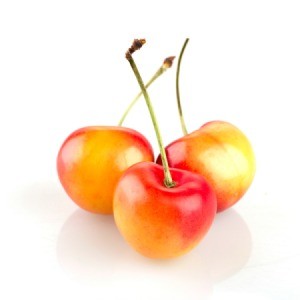 Can I get some help on starting Rainier cherry trees from the seeds? I just ate some and they are so good. I have saved the seeds. Do I need to dry them or soak them before planting in pots or what? Thanks so much for your help.
Can I get some help on starting Rainier cherry trees from the seeds? I just ate some and they are so good. I have saved the seeds. Do I need to dry them or soak them before planting in pots or what? Thanks so much for your help.
Hardiness Zone: 7a
By Michael L. McNeely from Roanoke, VA
I have started many cherry trees from the pits left from canning. I don't know if Rainier cherries will grow true to their parent plant or not, but if you have the space, why not give it a shot? If it doesn't work, you can always have a horticulture student graft some Rainier cherry branches onto your tree. Best of luck!
I also don't know if a true rainier cherry will come from its pit. I do know that cherries are like peaches and called "stone fruit" because the pit is hard like a stone. Putting a pit in a moisten wet cloth will do nothing but create a moldy wash cloth or bunch of paper towels.
I know this is a VERY late reply and I just ate two kinds of cherries and will be trying to grow trees with the pits. After a little research, the best instruction that I found for me since I live in Texas is to wash the seed thoroughly, let dry in a sunny location for up to 5 days. Store in the refrigerator inside a wet paper towel in a zip lock bag or container for at least 10 weeks to 3 months, keeping the towel moist and not wet.
From the Seattle Times (community.seattletimes.nwsource.com/
The Rainier, like all named varieties of fruit, won't sprout from a pit. Rather, it is planted from a rootstock that grafts two varieties of cherries together: the familiar Bing and the less-known Van.
I don't know about cherry pits, but I have some cherry pits also and I am going to do what I did with lemon, grapefruit and orange seeds. I set them in a washcloth (nice thick one) folded over the seeds and saturate the washcloth with water daily, or more often if the house is dry. Keep constantly moist and they should sprout in a couple of weeks.
P.S. All I did was throw them in the garden. At least one out of ten came up with no more encouragement than that.
I have used this technique successfully, with several different types of hard seeds... Take a nail file & very carefully sand off a area at the bottom of the seed- but be careful not to damage the seed inside. This will allow water to penetrate the seed, causing it to crack open slightly as the sprouting begins.
My mother is a green thumb. She has grapefruit, apple, lemon, guavas, and avocado tree. Not to mention ground rooted veggies. She takes seeds from eaten produce, dries them in open air and then wraps them in a moist napkin, and wraps in foil. She places in a sunny spot for a couple weeks until a sprout comes out.
I'm getting ready to also start from seed. Best research I did was to dry in sun throughly. File outer shell some to weaken hardness. Don't sand through to internal seedlet. Throw in freezer fir a month. Supposed to trick seed into dormant winter period. Take out, start your process if seed sprouting either watered towels or small starter dirt plots. Keep well watered daily. Seeds should sprout in a couple weeks.
I just got three Ranier cherry seeds to germinate. What you do is use a pliers to crack the shell of the pit off the actual seed. I did that to about eight seeds and wrapped then in a damp pair l paper towel in a container under the sun. I am now putting them in soil to see if they will keep growing.
I have started a Rainer Cherry from the pit. I did not soak it , I just let the pit dry out .And skipped a year before planting it. It came up , I was surprised.
I cracked the pit and planted in a moist nursery pot, placed under a shade and after a month it's sprouted.
Hello I was wondering if you are seeing any fruit on your tree and if so are they Rainier cherries or are they just yellow or red cherries?